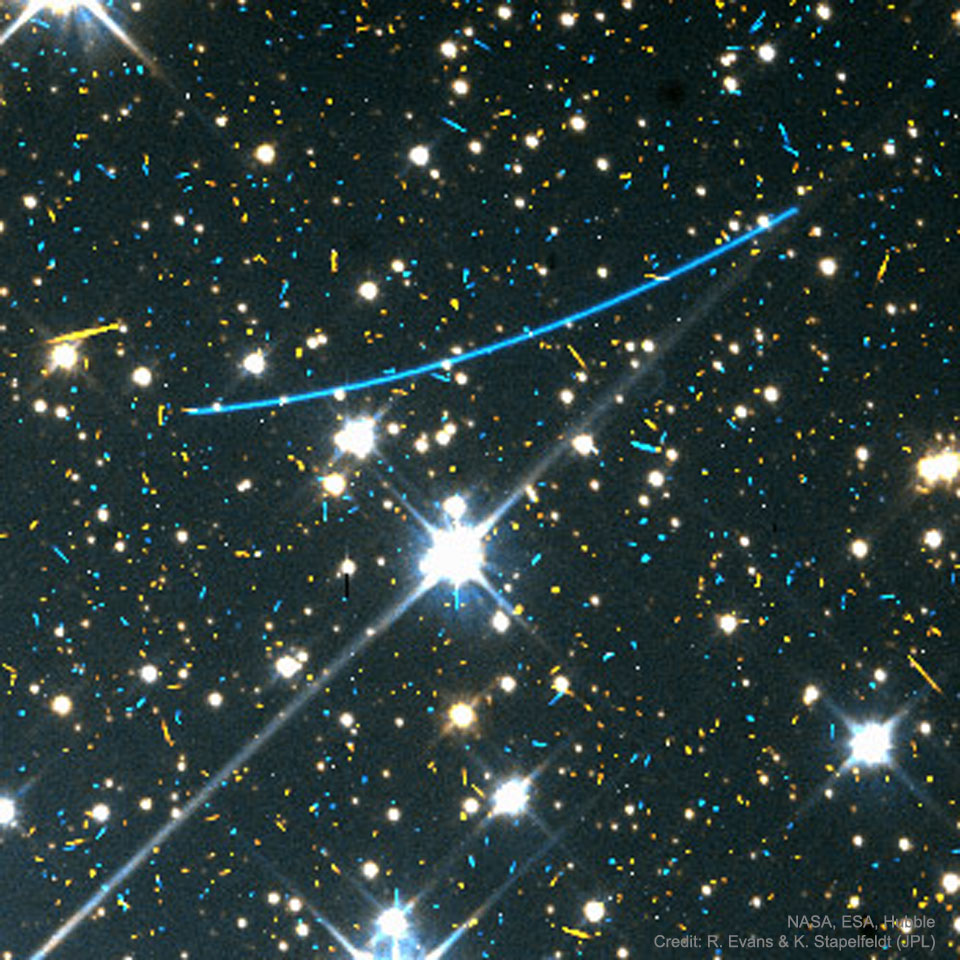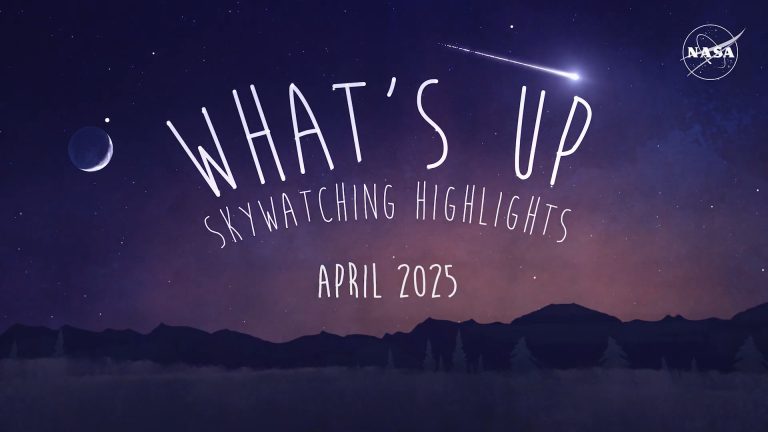2021年01月31日
Asteroids in the Distance
Image Credit: NASA, ESA, Hubble; R. Evans & K. Stapelfeldt (JPL)
Explanation: Rocks from space hit Earth every day. The larger the rock, though, the less often Earth is struck. Many kilograms of space dust pitter to Earth daily. Larger bits appear initially as a bright meteor. Baseball-sized rocks and ice-balls streak through our atmosphere daily, most evaporating quickly to nothing. Significant threats do exist for rocks near 100 meters in diameter, which strike the Earth roughly every 1000 years. An object this size could cause significant tsunamis were it to strike an ocean, potentially devastating even distant shores. A collision with a massive asteroid, over 1 km across, is more rare, occurring typically millions of years apart, but could have truly global consequences. Many asteroids remain undiscovered. In the featured image, one such asteroid — shown by the long blue streak — was found by chance in 1998 by the Hubble Space Telescope. A collision with a large asteroid would not affect Earth’s orbit so much as raise dust that would affect Earth’s climate. One likely result is a global extinction of many species of life, possibly dwarfing the ongoing extinction occurring now.
Tomorrow’s picture: bunny-moon
远方的小行星
影像提供: NASA, ESA, Hubble; R. Evans & K. Stapelfeldt (JPL)
说明: 每天都有来自太空的石头撞击地球。不过,愈大的石头,愈少撞到地球。总结来说,每天有许多公斤的太空尘埃飘落到地球。较大的碎片穿过地球大气时,会形成明亮的流星。每天都有棒球大小的石头与冰球进入地球大气,其中大多 数会快速汽化化为乌有。然而,直径近100公尺的石块,对地球有较重大的危害;这种尺度的撞击,大约每1千年有一次。当这种大小的陨石撞入海洋时,可能引发大海啸,连远处的海岸可能都会受到相当大的破坏。地球与直径超过1公里的大质量小行星 鲜少发生互撞,大约间隔1百万年才会出现一次,但发生时会造成全球性的灾害。很多小行星,至今仍尚待发现。例如,上面这张主题影像中的蓝色长星迹,便是1998年才由哈伯太空望远镜所发现的一颗小行星。和一个大型的小行星碰撞,并不会大幅改变地球的轨道,但是撞击所扬起的尘埃将影响地球的气候,甚至可能造成地球很多物种的灭绝,让现在正发生的物种灭绝之规模相形见小。
明日的图片: bunny-moon







